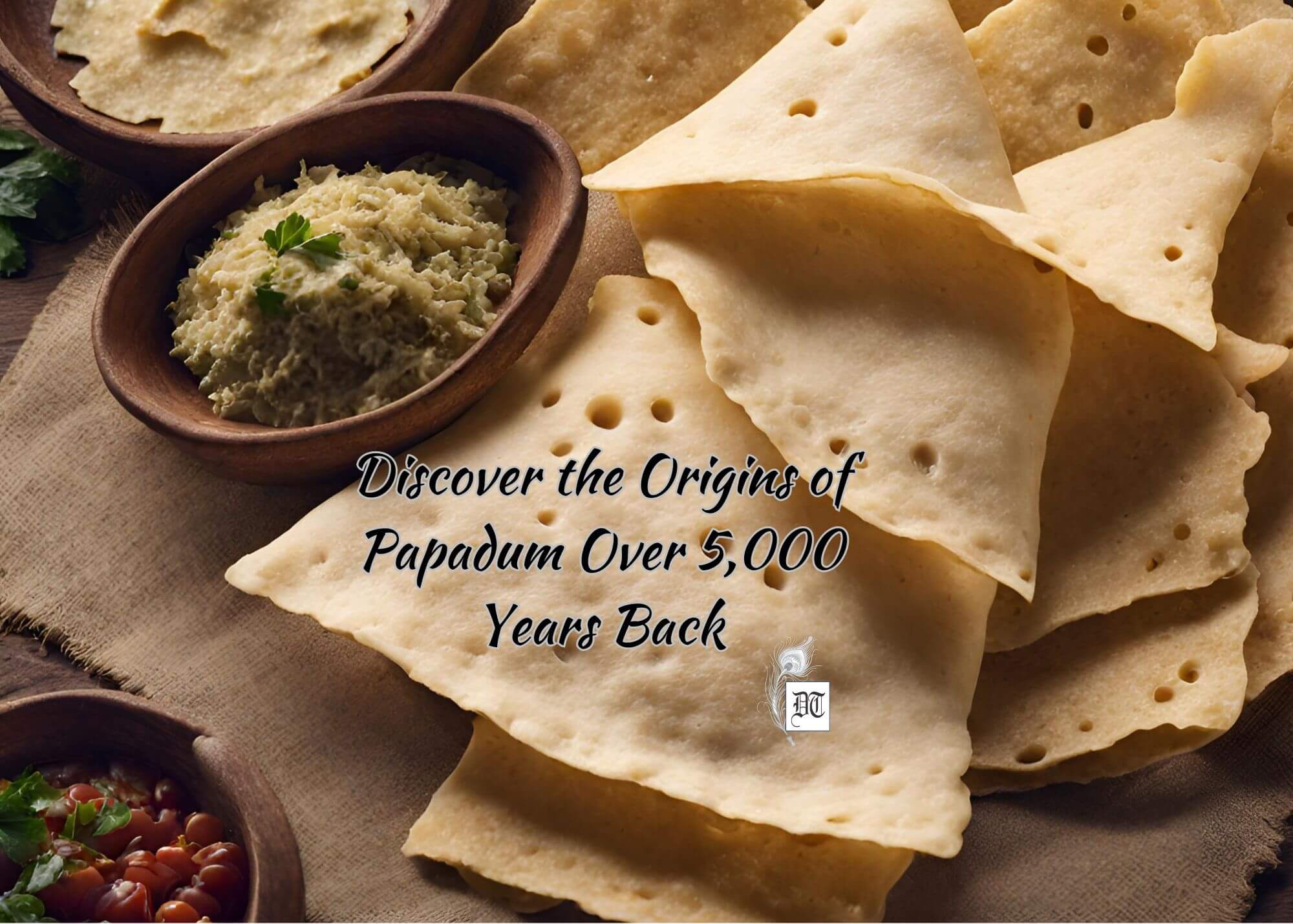In 1889, Queen Margherita decided to go on a tour of her Italian kingdom. She saw many peasants and common people enjoying Pizza in the streets. She would often ask her guards to bring her these bread to eat. One day, she summoned chef Raffaele from his Pizzeria and asked him to bake his pizza in the royal kitchens. He dished up a special version with tomatoes, basil, and mozzarella cheese. It became the queen’s beloved Pizza and soon word got around about the royal preference. Thus, the Pizza rose from the masses and reached the classes. It was no longer the common man’s food. The culinary tradition started by the queen, namely, the Pizza Margherita spread all over the world from Naples. Lily traces the antiquity of Pizza, dating back to the Neolithic Era, with similar bread from various parts of the world, and how it became the comfort food in the US, in the weekly column, exclusively for Different Truths.
I walked with childlike glee down the street in Little Italy, New York where the first pizzeria of the United States still stands. The board was nondescript but the serpentine queue waiting outside for a table to eat the authentic tasting flat bread was sensational. Lombardi’s was founded in 1905. The Pizza was smoky, crusted, coal oven baked, with a San Marzano tomato sauce, fresh mozzarella, and basil. Gennaro Lombardi started selling tomato pies wrapped in paper to factory workers in 1857.
Flatbreads with toppings were the beginnings of the history of pizza, steeped in the antiquity of numerous cultures. The precursor to Pizza was probably the focaccia, which was a flatbread known as Panis focaccias to the Romans in 997 AD. The word pizza was first documented in Gaeta and later in southern and central Italy. Pizza, as it is now, has its roots in Naples, when the tomato was added to focaccia as a topping. This was towards the end of 18th century. Immigrants brought it to the American shores, later World War soldiers learned to relish it along with other Italian cuisines. Today, in America, Pizza is the food kids grow up most familiar with along with macaroni and cheese. A huge slice of cheese oozing pizza is the best comfort food on many a dismal evening. A happy food that gets an awfully poor report card by the health freaks. The saving grace being the tomatoes, which make it lycopene-rich and healthy.
Foods very close to the Pizza we now eat were found since the Neolithic Ages. Archaeologists found bread, 7000 years ago, in Sardinia. Plaknous was the name of an Ancient Greek flat bread topped with garlic, onion, and herbs. A fascinating fact I read was about the 6th century BC Persian King Darius 1. His army baked flatbreads topped with dates and cheese on top of their battle shields. Some say that the Roman Jews ate Pizzarelli Kosher cookies.
Mankoucheh in Lebanon, Coca. Greek Pita, Lepinja from Balkans, Piadina in Italy were the rumblings of the modern looking pizza. The Chinese Biga, Indian Parantha, Roti. The Germans have one too, whose spelling I am not going to hazard today. The Finnish have Rieska, the French have Quiche.
The basic foundations for Pizza were actually laid down by the large round flatbreads baked by the early Greeks. These were anointed with oil, herbs, spices and dates. Tomatoes had not been discovered then. By the 18th century, these flatbreads reached Italy, where they were sold as street food in Naples. This food of the masses was tasty, filling and cheap.
In 1889, Queen Margherita decided to go on a tour of her Italian kingdom. She saw many peasants and  common people enjoying Pizza in the streets. She would often ask her guards to bring her these bread to eat. She loved their taste. One day, she summoned chef Raffaele from his Pizzeria and asked him to bake his pizza in the royal kitchens. He dished up a special version with tomatoes, basil, and mozzarella cheese. These were the colours of the Italian flag – red, white and green. It became the queen’s beloved Pizza and soon word got around about the royal preference. Thus, the Pizza rose from the masses and reached the classes as well. It was no longer the common man’s food. The culinary tradition started by the queen, namely, the Pizza Margherita spread all over the world from Naples.
common people enjoying Pizza in the streets. She would often ask her guards to bring her these bread to eat. She loved their taste. One day, she summoned chef Raffaele from his Pizzeria and asked him to bake his pizza in the royal kitchens. He dished up a special version with tomatoes, basil, and mozzarella cheese. These were the colours of the Italian flag – red, white and green. It became the queen’s beloved Pizza and soon word got around about the royal preference. Thus, the Pizza rose from the masses and reached the classes as well. It was no longer the common man’s food. The culinary tradition started by the queen, namely, the Pizza Margherita spread all over the world from Naples.
Once it was associated with America it got worldwide acceptance from the young brigade. If rock and roll and blue jeans were cool, so was Pizza!
With so much confusion about its origin, the interesting fact that I ponder over is that the word Pizza is the Italian word for pie and could have come from the Latin pix or pitch or perhaps from the Greek word pita! The Greeks, Armenians, Babylonians, Israelis were all baking some derivative of this genre in mud ovens since ancient times.
 I love to mention the fact that the world became much more fun to live in when Pizzas began to be delivered at home. In the late sixties, the US Army’s 113th military intelligence unit used fake Pizza deliveries to spy on politicians and reporters. I also remember hearing somewhere that in 1991, Pizza Hut delivered free Pizza to the group that was holed up in the Russian White House, resisting the coup against Gorbachev.
I love to mention the fact that the world became much more fun to live in when Pizzas began to be delivered at home. In the late sixties, the US Army’s 113th military intelligence unit used fake Pizza deliveries to spy on politicians and reporters. I also remember hearing somewhere that in 1991, Pizza Hut delivered free Pizza to the group that was holed up in the Russian White House, resisting the coup against Gorbachev.
The nicest thing about Pizza is that it has been adapted to suit all cultures and tastes. One can choose one’s favourite vegetables, seasonings, and meats. It has a global reach. Do not be surprised to see the menu card in an Indian outlet of any famous branded outlet. You might just encounter a Chicken Tikka Pizza alongside a traditional Pizza Napoletana.
Please eat a hand spun Pizza made in a wood fired oven. A 3 mm disk of dough with a 1-2 cm high crust. No rolling pin or machine press must be used. Only the hands of the pizzaiolo! It needs to be cooked in a wood brick oven for 90 seconds, at 485 degree Celsius. Never make the mistake of using a fork and knife, please. Just pick up a slice, bite into the heavenly marriage of ingredients and roll your eyes heavenwards and exclaim, “Grazie, Grazie!”
©Lily Swarn
Photo from the internet.
#Pizza #HistoryOfPizza #ItalianPizza #TypesOfPizzas #HistoryAndMystryOfFood #Food #DifferentTruths







 By
By


An extremely interesting piece…Beautifully written